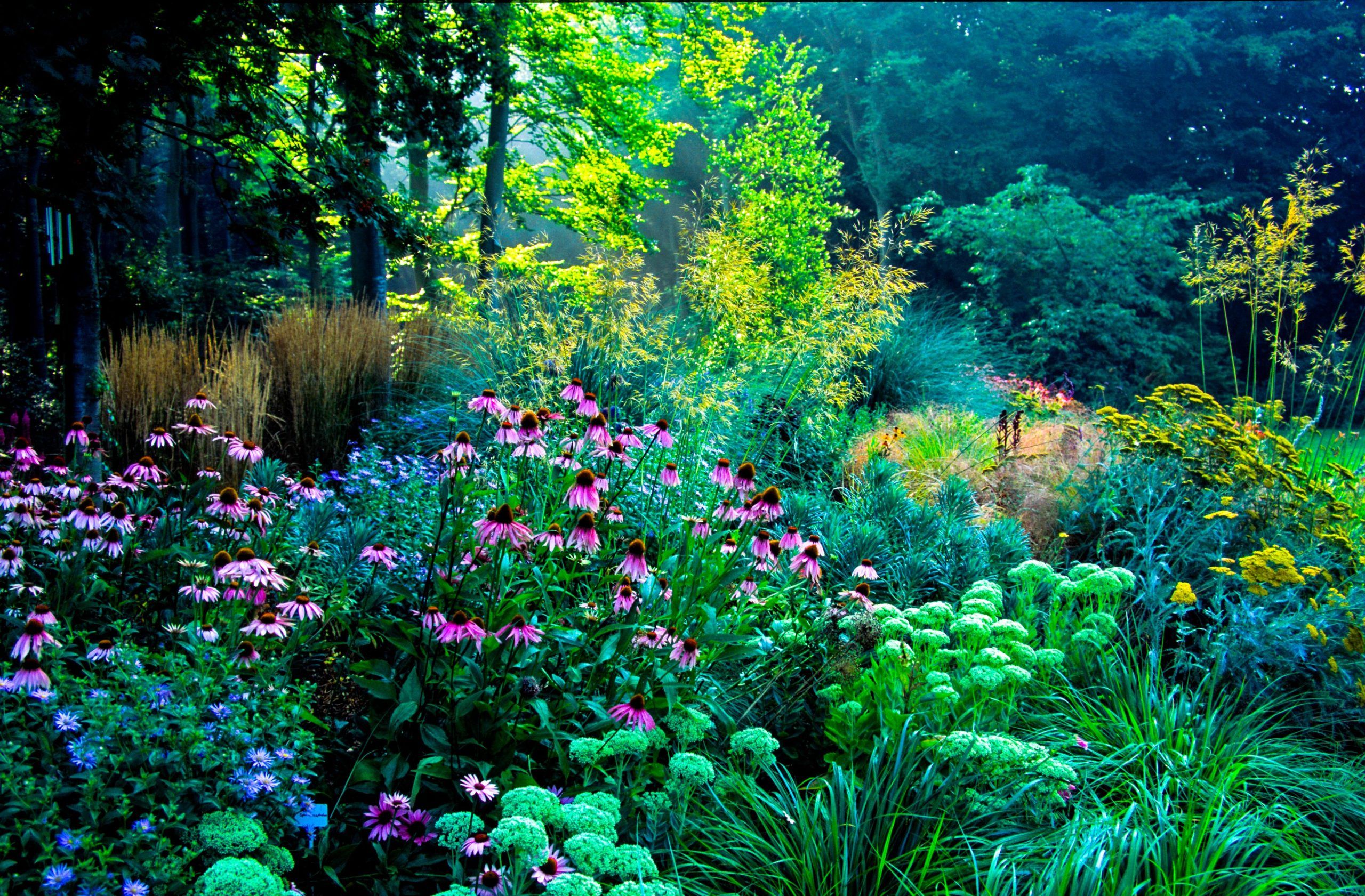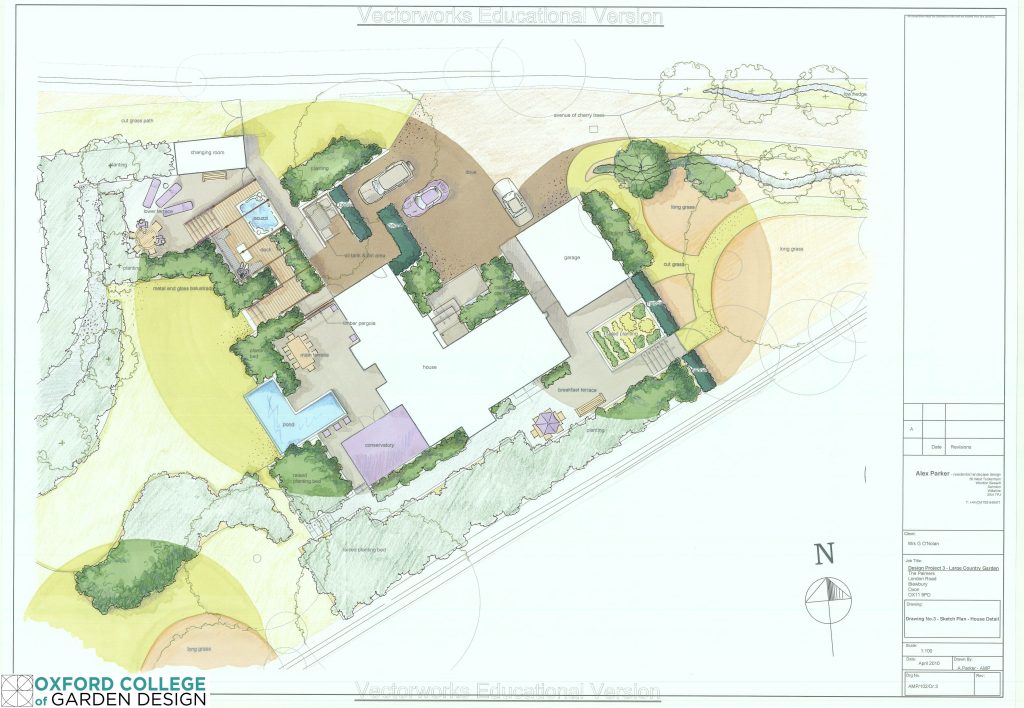
How to Become a Garden Designer: What’s Involved and How to Get Started
How to become a garden designer. Every garden begins as a vision shaped by the land itself and by the possibilities it holds. Yet turning that vision into a thriving landscape demands more than imagination. It calls for technical skill, strategic planning, and a practical understanding of the environment.
Garden designers bring these elements together with care and intent. They shape overlooked spaces into living environments that feel natural yet are precisely constructed. Garden, landscape, and exterior design offer the opportunity to combine creative insight with technical discipline, guided by a respect for natural systems.
A career in this field suits those willing to build knowledge, refine their skills, and shape outdoor spaces that endure and inspire. This guide outlines what the work involves, the qualities that lead to success, and how strong training can turn potential into lasting professional achievement.
What Defines the Work of a Garden Designer?
Let’s clear up a common misconception first. A garden designer’s role extends far beyond plant selection. The scope includes elements of architecture, horticulture, project management and construction. Projects span city courtyards, historic grounds, and community parks, each with its own requirements and character.
This work matters because no two sites are ever alike. Each presents its own conditions—soil, aspect, climate—and its own opportunities. A well-designed garden considers not just immediate beauty, but how a space will perform season after season, year after year.
Modern garden designers also carry environmental responsibilities. Projects increasingly require considerations of biodiversity, water management, and climate resilience. Garden design has become a profession that shapes not only how spaces are used but also how they endure.
Why Pursue a Career in Garden and Landscape Design?
Garden and landscape design suits individuals who appreciate the connection between nature and built environments. It values creativity and problem-solving equally, offering work that blends vision with tangible results.
Career options in this field are diverse, including roles such as:
- Design Studio Team Member: Collaborate on tailored gardens for homes or public settings.
- Landscaping Firm Designer: Help plan and deliver larger projects as part of a team.
- Local Authority Contributor: Develop and revitalise public parks or communal spaces.
- Independent Consultant: Guide clients through every stage of garden creation.
- Conservation Specialist: Restore historic or heritage gardens.
- Urban Renewal Designer: Turn underused city areas into valued green spaces.
The work is varied and, above all, meaningful. Completed projects frequently support local communities, encourage wildlife, and foster environmental responsibility.
Skills and Qualities That Shape Success
While an instinct for composition is an advantage, the most successful designers build a broad set of skills that work together on every project.
Visual Thinking
Designers shape how spaces feel and function. Whether sketching by hand or refining a CAD plan, strong visual thinking creates clarity from concept to construction.
Plant Knowledge
Knowing which plants will thrive, fail, or take over a site makes the difference between a lasting garden and one that struggles. Matching species to soil, climate, and aspect ensures beauty and resilience from the ground up.
Technical Proficiency
Measured site surveys, detailed technical drawings, and clear specifications anchor creative ideas in buildable realities. Precision here prevents costly mistakes later.
Clear Communication
Every project requires collaboration. Clear, confident dialogue with clients, contractors, and suppliers builds trust and keeps projects moving even when unexpected challenges arise.
Project Management
Budgets tighten, schedules shift, and unexpected challenges surface. Keeping a project on track demands methodical organisation and the ability to adjust plans with precision and calm.
In practice, these skills overlap constantly. A project succeeds when visual insight, technical understanding, practical management, and human collaboration intersect. Well-structured training helps nurture this interconnected ability.

Why Education Matters: The Value of Professional Training
Practical experience is valuable, but formal education delivers structured, comprehensive preparation that self-teaching alone often cannot match. Effective garden design courses offer:
- Comprehensive Coverage: Instruction across design principles, planting strategy, site analysis, sustainability practices, technical drawing, and professional standards.
- Real-World Assignments: Experience working on different project types, from small private gardens to public urban spaces.
- Portfolio Development: Building a portfolio that demonstrates creativity and technical skill to future employers or clients.
- Industry Access: Engagement with experienced professionals and industry critiques to maintain alignment with current expectations.
- Recognised Qualifications: Accreditation that improves employment prospects and opens pathways to professional memberships.
Top programmes often combine academic rigour with practical exposure. The Oxford College of Garden Design, for example, offers weekly video lectures, live tutorials, and post-graduation mentorship to bridge the gap between study and professional practice. This approach supports students from the first concept to the first commission.
How to become a garden designer: From Education to Professional
Success in garden and landscape design begins with choosing a course that meets professional standards and demonstrates proven results. Indicators such as graduate portfolios, alumni achievements, and employer partnerships provide a reliable sense of a programme’s quality.
Engagement during study is essential. Real-world assignments, technical challenges, and feedback sessions build resilience and adaptability. Early exposure to volunteer work or internships offers invaluable lessons and tangible portfolio pieces that support the shift into paid work.
The Oxford College of Garden Design exemplifies where strong training can lead. Its graduates have built gold-standard reputations, with many securing prestigious awards such as BBC Garden Designer of the Year and Society of Garden and Landscape Designers (SGLD) Student of the Year. Their success points to the value of training that blends technical strength with creative adaptability.
Professional growth continues well beyond graduation. Membership in organisations such as the Association of Professional Landscape Designers (APLD) provides access to ongoing workshops, peer networks, and professional development opportunities that keep skills current as environmental needs and client expectations evolve.
Conclusion: Building Expertise That Lasts
Garden design is a practical profession that shapes spaces with lasting value—places that welcome, shelter, and evolve naturally. Success depends on more than natural talent; it grows through technical mastery, dedicated learning, and continual development.
Structured education equips designers with the essential skills and credibility needed to meet modern project demands. For those considering formal training, the Oxford College of Garden Design offers a one-year post-graduate diploma in landscape design, combining expert instruction with practical support to prepare graduates for successful practice.
Begin building a career where creativity and the natural world come together, and let expertise shape every project ahead.

